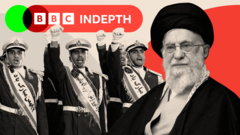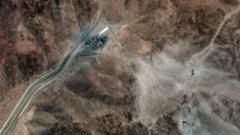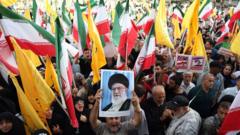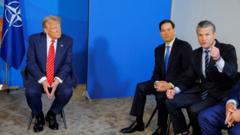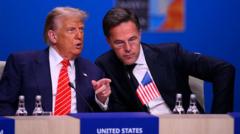John Ratcliffe, head of the CIA, asserted that U.S. operations had substantially damaged key Iranian nuclear sites, contradicting a leaked Pentagon report suggesting the program's core elements remained intact. Although Ratcliffe did not claim the program was entirely dismantled, he emphasized the extensive damage inflicted during the military engagement. This assessment diverges sharply from President Trump’s earlier remarks, which touted the strikes as "obliteration."
CIA Director Claims Iran’s Nuclear Facilities Suffered Major Setbacks
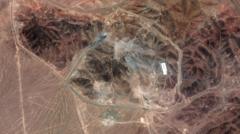
CIA Director Claims Iran’s Nuclear Facilities Suffered Major Setbacks
In a startling announcement, the CIA Director stated that U.S. military strikes have significantly impaired Iran's nuclear capabilities, prompting varied responses from officials and analysts.
Prior to Ratcliffe’s statements, a leaked evaluation from the Defense Intelligence Agency indicated that the bombing's impact might only delay Iran's nuclear ambitions by a few months. Trump, maintaining his strong stance, called into question the integrity of the media portraying the strikes and announced a news conference for military officials to present their findings.
Recent monitoring through satellite imagery has revealed significant craters around the targeted sites, raising further questions about the effectiveness of the operation against Iran's deeply entrenched facilities. Ratcliffe noted that rebuild efforts for the severely damaged sites like Natanz, Fordo, and Esfahan could extend over several years if Iran chooses to pursue reconstructions.
As the geopolitical landscape evolves, the possibility of future negotiations between the U.S. and Iran looms. American officials report some level of direct and indirect communication between the two countries, albeit Iran remains reluctant to acknowledge such discussions.
Meanwhile, Iranian officials have conveyed mixed messages regarding the attack's effects, with some asserting the installations suffered extensive damage while others insisted that no irreversible harm was inflicted.
As further intelligence assessments are expected, the ongoing tensions underscore the fragility of stability in the region, and international observations will continue to shed light on the trajectory of Iran’s nuclear ambitions.
In light of the conflicting narratives and evolving situation, the international community remains watchful over potential developments and responses from both Iran and the U.S. as diplomatic channels may open amidst renewed hostilities.
The questions surrounding Iran's nuclear program continue to provoke debate, illustrating the complexities and high stakes involved in these international relations.
Recent monitoring through satellite imagery has revealed significant craters around the targeted sites, raising further questions about the effectiveness of the operation against Iran's deeply entrenched facilities. Ratcliffe noted that rebuild efforts for the severely damaged sites like Natanz, Fordo, and Esfahan could extend over several years if Iran chooses to pursue reconstructions.
As the geopolitical landscape evolves, the possibility of future negotiations between the U.S. and Iran looms. American officials report some level of direct and indirect communication between the two countries, albeit Iran remains reluctant to acknowledge such discussions.
Meanwhile, Iranian officials have conveyed mixed messages regarding the attack's effects, with some asserting the installations suffered extensive damage while others insisted that no irreversible harm was inflicted.
As further intelligence assessments are expected, the ongoing tensions underscore the fragility of stability in the region, and international observations will continue to shed light on the trajectory of Iran’s nuclear ambitions.
In light of the conflicting narratives and evolving situation, the international community remains watchful over potential developments and responses from both Iran and the U.S. as diplomatic channels may open amidst renewed hostilities.
The questions surrounding Iran's nuclear program continue to provoke debate, illustrating the complexities and high stakes involved in these international relations.




